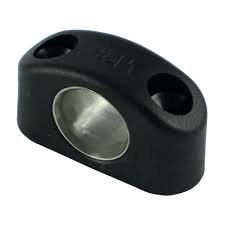Captain Sillyboxes
Member
My boat is a gaff cutter with a wooden boom. The reefing system involves 3 reefing lines each of which starts near the after end of the boom, passes through a reefing cringle in the leach of the sail, returns through a sheave near the after end of the boom, and finally runs forward to a cleat near the forward end of the boom where you make it off to put in a reef.
When I became the owner of the boat, there were two equally spaced loops running around the boom and reefing lines, these served to prevent reefing lines that are not in use from hanging below the boom, causing a risk of snagging on someone's neck when tacking or gybing. But these loops were made of electrical cable, fastened to themselves with electrical connector blocks. It looked incredibly ramshackle and naff so when they fell off from natural causes I replaced them with bits of 3mm polyester rope which looked more seamanlike... until the first time I tried to put in a reef and the friction with the new strangle preventers made it almost impossible. So it turns out that there was a reason the previous owner used these unorthodox electrical cables - low friction between cable and reefing line.
My question is, is there a standard solution to this problem which doesn't involve electrical cables or introduce extra moving parts/complexity?
When I became the owner of the boat, there were two equally spaced loops running around the boom and reefing lines, these served to prevent reefing lines that are not in use from hanging below the boom, causing a risk of snagging on someone's neck when tacking or gybing. But these loops were made of electrical cable, fastened to themselves with electrical connector blocks. It looked incredibly ramshackle and naff so when they fell off from natural causes I replaced them with bits of 3mm polyester rope which looked more seamanlike... until the first time I tried to put in a reef and the friction with the new strangle preventers made it almost impossible. So it turns out that there was a reason the previous owner used these unorthodox electrical cables - low friction between cable and reefing line.
My question is, is there a standard solution to this problem which doesn't involve electrical cables or introduce extra moving parts/complexity?
Last edited:

